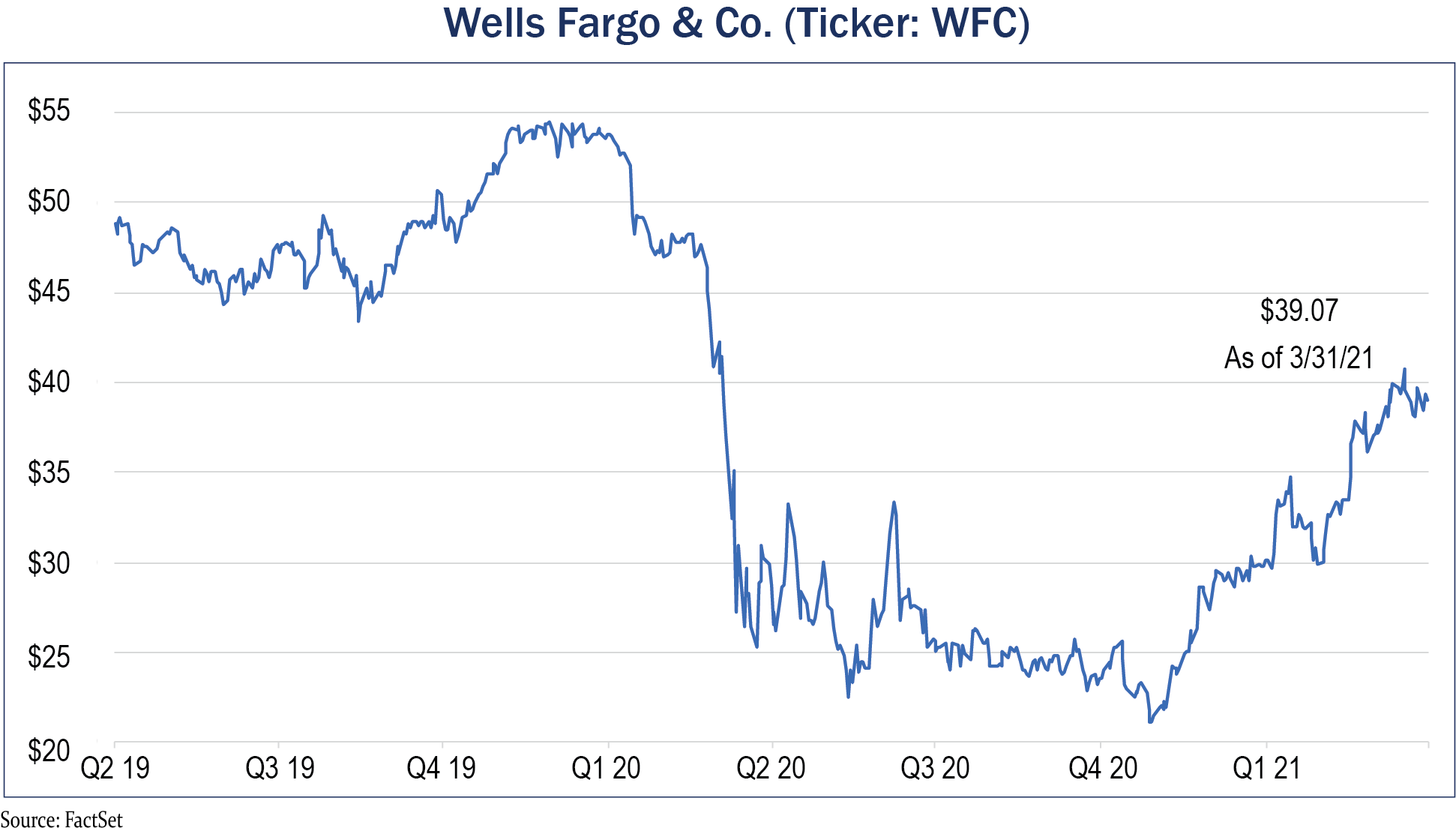Company Spotlight: Wells Fargo (WFC)
By Eric Schopf
Wells Fargo & Co. is a diversified, community-based financial services company. It offers banking, insurance, investments, mortgages and consumer and commercial finance. WFC operates through three segments: Community Banking, Wholesale Banking and Wealth & Investment Management. The Community Banking segment offers diversified financial products and services for consumers and small businesses including checking and savings accounts, credit and debit cards and automobile, student and small business lending. The Wholesale Banking segment provides financial solutions to businesses across the United States and globally. The Wealth & Investment Management segment includes personalized wealth management and investment and retirement products and services. The company was founded in 1852 and is headquartered in San Francisco, CA. Today, WFC operates over 5,900 branches across thirty-nine states and the District of Columbia. Wells Fargo is one of the largest banks in the country with $1.9 trillion in assets.
Wells Fargo had earned a sterling reputation for sound management. The bank’s financial stability enabled it to purchase the failing Wachovia during the 2009 financial crisis. Wells Fargo emerged from the crisis with its reputation intact and an image as a bank that was able to avoid many of the worst errors committed by other banks.
In the years following the financial crisis, however, a dirty secret began to emerge. The community bank’s business model imposed intentionally unreasonable sales goals and unreasonable pressure on its employees to meet those goals. It fostered an atmosphere that perpetuated improper and illegal conduct. The internal sales culture centered on meeting unrealistic quotas that led Wells Fargo employees to sign millions of customers up for accounts and credit cards they didn’t want, didn’t need and often didn’t even know about. Despite terminating around 5% of its branch-based employees as a sign of action, Wells Fargo’s executives refused to address the root of the problem. Employees were forced to work nights and weekends, frequently without pay, in order to increase their cross sales. Wells Fargo’s executives knew of the illicit sales practices for years yet allowed them to continue.
Punishment for their mismanagement was severe. The U.S. Treasury Department fined the former head of Wells Fargo’s Community Banking division $25 million. John Stumpf, the chief executive officer, received a $17.5 million fine and a lifetime ban from the banking industry. The fine was on top of $41 million in equity awards that he forfeited when he stepped down from Wells Fargo in 2016, and another $28 million in compensation the bank clawed back from him in the wake of the scandal. Fines and settlements, including those with the Consumer Financial Protection Bureau and the U.S. Attorney General, brought the total cost to nearly $3 billion. However, perhaps the costliest punishment was the Federal Reserve’s capping of the bank’s assets at December 2017 levels of $1.95 trillion. This asset cap severely limited growth.
Wells Fargo has taken appropriate actions to rectify the situation starting with the hiring of new senior management. The new CEO, Charlie Scharf, is well respected and has served in a similar capacity at both Visa and Bank of New York Mellon. His goal is to have the asset cap removed so that growth may resume. The environment for growth is good. Fiscal stimulus has allowed consumers to solidify their balance sheets so credit metrics are strong. Higher interest rates and a steep yield curve make the business of loaning money very profitable.
The legal fallout from managerial misdeeds resulted in a 60% drop in shares price. We view the problem as fixable and used the opportunity to purchase the stock.




